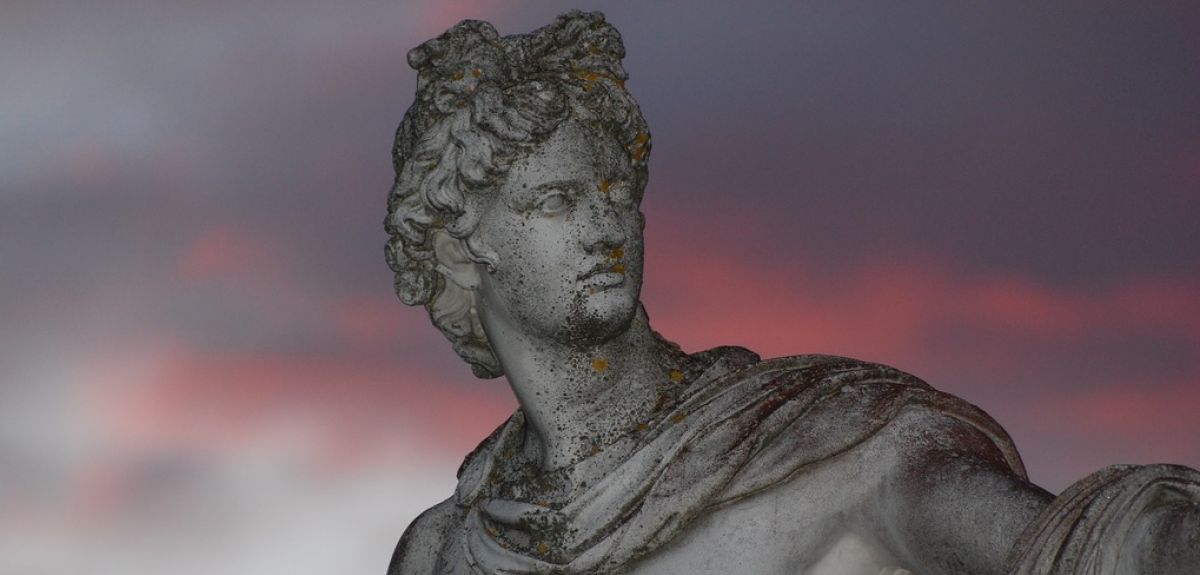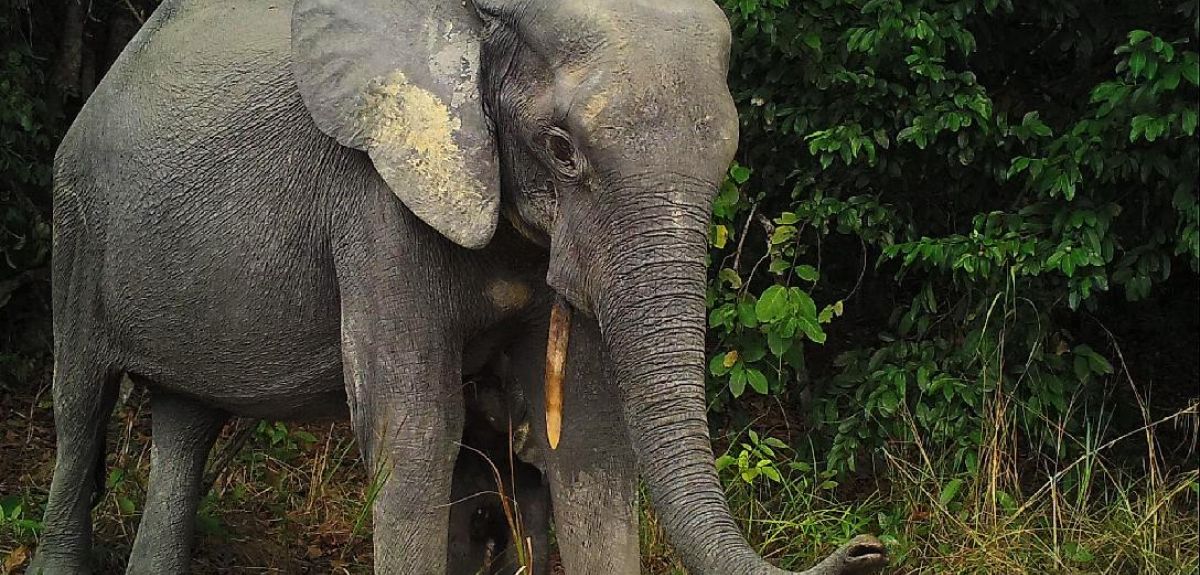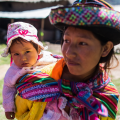Features
In the latest animation from Oxford Sparks, experts from the Oxford Genomics Centre talk us through how they 'read' DNA – the 'instruction book' inside of all our cells.
Oxford Sparks is a great place to explore and discover science research from the University of Oxford. Oxford Sparks aims to share the University's amazing science, support teachers to enrich their science lessons, and support researchers to get their stories out there. Follow Oxford Sparks on Twitter @OxfordSparks and on Facebook @OxSparks.
This is the latest in the Artistic Licence series.
Art is part of all our lives. But if you’ve ever tried putting paintbrush to paper, or slipped on a pair of ballet shoes, you’ll know that it’s not easy to make it.
Because most of us can draw a face, or shuffle awkwardly and call it dancing, but few of us will paint sunflowers as well as Van Gogh or tap dance like Fred Astaire. But why not? What makes good art good?
Dr James Grant, philosophy tutor at Exeter College, is using the tools of philosophy to explore that very question.
Looking at artworks across the spectrum - from performance to sculpture to oil painting - he’s exploring what differentiates the doodles from the Dali.
“I want to see if there is an overarching theory of what features make an artwork good,” he says.
And, taking inspiration from Aristotle, he’s come up with a novel argument.
Dr Grant argues that good art exhibits “excellences”.
“Excellences” are attributes that demonstrate high levels of thought, character, and perception. Two key excellences are imaginativeness and good craftsmanship.
So if your artwork is highly creative, and includes a high level of skill, chances are it’ll be a good one.
This might all sound obvious—but Dr Grant’s theory contributes to big debates in philosophy.
He hopes to show that art is not just instrumentally valuable - valuable because it serves a purpose, like making us feel good - but intrinsically valuable - good in its own right.
“I think this provides a new argument for the intrinsic value of art,” he says.
So what is an example of a good artwork that has these excellences?
“I find Chinese jade sculptures very interesting,” Dr Grant says. “Jade is extremely hard to work with, so there’s incredible skill behind these pieces.
“Another example would be Gaudí’s architecture. Not everybody likes it, but it’s imaginative. The Sagrada Familia cathedral is a pretty dramatic manifestation of imaginative thinking.”
Dr Grant hopes that, by thinking about art in this way, we might start to appreciate beauty, and art, differently.
“Many people talk about art as if it’s valuable only because we get pleasure from it. I’m arguing that, when you appreciate and enjoy a good work of art, it’s also true that you get pleasure from it because it’s valuable,” he says.
So that’s all there is to it. If you hone your skills, and think creatively, you too could make art to rival Rembrandt. Better get practising.
Deciding when to return to the GP when symptoms do not resolve is something many people struggle with, especially when the symptoms may not appear to be serious or life-threatening. Research with cancer patents in Denmark, England, and Sweden, published today in BMJ Open, indicates that small changes to how doctors conclude consultations with their patient could help to improve both survival rates and efficiency.
Led by Oxford University, the international team included researchers from Aarhus University in Denmark with Lund University, Umeå University and the Karolinska Institute in Sweden. The project was funded by Cancer Research UK.
The researchers interviewed 155 people aged between 35 and 86 years old, within six months of being diagnosed with lung or bowel cancer. Patients were invited to talk about events since they had first noticed a problem, including what influenced their decision to consult a doctor.
The study compared Denmark, England, and Sweden because survival rates for lung and bowel cancer between 1995 and 2007 were persistently higher in Sweden than in Denmark or England, particularly in the first year following diagnosis.
Notable differences between the three countries were found in patients’ accounts of the clarity and communication of action plans at the end of GP consultations. Patients in England and Denmark told the researchers that they had not known whether and when to return to their GP with symptoms, while Swedish patients described clear action plans with instructions from their GP to return in specified timeframes.
The study concluded that if clear action plans are used routinely in primary care consultations then uncertainty, false reassurance, and the inefficiency and distress of multiple consultations during cancer diagnosis could be reduced.
The authors recommend that every GP consultation should conclude with explicit advice about what to look out for and provide specific advice for patients to return if symptoms do not resolve, or re-occur.
Dr John MacArtney, Senior Researcher at Oxford University’s Nuffield Department of Primary Care Health Sciences, said: ‘Spotting cancer early can make the difference between survival and death. We already know that many people are reluctant to seek medical attention in the first place, for fear of unnecessarily bothering their doctor. If they have already seen a GP for the same or similar symptoms then they may wait longer to return, even if they have been given the general advice to “come back if things don’t get better”. This makes it important to understand why people might be reluctant to re-visit their GP.’
The study, which is the first to study how patients experience the pathway to cancer diagnosis, has helped to illuminate previous findings from other International Cancer Benchmarking Partnership studies, which have shown that no single factor could explain why differences in cancer outcomes persist between high-income countries with universal health coverage.
The study lead Sue Ziebland, Professor of Medical Sociology in Oxford University’s Nuffield Department of Primary Care Health Sciences, said, ‘Making the general public aware of the seemingly innocuous symptoms of common cancers is only one part of improving early diagnosis. It is just, if not more, important to remove the barriers patients face in getting to see their GP if they are concerned about their health. One of those barriers arises when patients are unsure about what to do when symptoms return or persist, because they have already seen a GP.
‘Recognising these issues exist, and encouraging GPs to communicate concrete and specific action plans, could be vital in improving patient survival, especially for those patients who worry about wasting the doctors time.’
Sara Hiom, Cancer Research UK’s director of early diagnosis, said: ‘Diagnosing cancer is complex and most often starts with someone presenting to their GP with signs or symptoms they’re not sure about. This fascinating study builds our understanding of what’s happening at a very personal level, at what can be an anxious and difficult time for patients. Having this insight across different countries and cultures helps build a clear picture of what’s most important about the conversation between the doctor and patient, and could well improve cancer outcomes. GPs across the UK may need more support to help them make the most of these critical consultations in the little time available. Charities such as Cancer Research UK can provide information to patients at this point in the diagnostic process.’
The full paper, 'Patients’ initial steps to cancer diagnosis in Denmark, England and Sweden: what can a qualitative, cross-country comparison of narrative interviews tell us about potentially modifiable factors?' can be read in BMJ Open.
This is the latest in the Artistic Licence series.
Everyone knows a Dave. But how many of us know an Apollonios?
Apollonios, Ἀπολλώνιος in its original Greek, is derived from the name of the God Apollo, and was a popular name in the Ancient World.
And a long-running project in the Classics Faculty has spent the past 45 years collecting and recording thousands and thousands of similar names—to create a dictionary all of the personal names that men and women went by in Ancient Greece. These names can give fresh insights into Ancient Greek society.
The Lexicon of Greek Personal Names (LGPN) was established in 1972. Its aim is to scour Ancient Greek literature, inscriptions, graffiti, coins, vases, and other artefacts, and create a dictionary of all of the names found in them.
By collecting these names, researchers hope to shed light on the social history of the Ancient Greek world. Names can help us to understand how religion shaped society, how naming patterns changed, and even how some Ancient Greek names have survived to this day.
Take Apollonios (Ἀπολλώνιος). Because it derives from the God Apollo, is it known as a ‘theophoric’ name—a name that comes from the Gods. This sort of name was common in Ancient Greece, and give us an insight into which Gods were important at different times.
“The names reflect various levels of religion and piety,” says Dr Michael Zellmann-Rohrer, a researcher for the LGPN project. “It’s a much richer record than literary texts or even temples.”
This is because, while it may be normal to find tributes to Gods in temples, naming your beloved child after a God shows a much stronger sense of devotion. “Parents are expressing their relations to the Gods in the naming of their children,” Dr Zellmann-Rohrer says.
These days, theophoric names like Apollonios or Demetria—after the goddess Demeter—are not so common in English. But some traditions have stayed around.
“I was named after my father,” says Dr Zellmann-Rohrer. “Naming a child after a parent or grandparent is quite common—and people did it in Ancient Greece too.”
So chances are that Zosimos (Ζώσιμος) might well decide to call his baby daughter Zosime (Ζωσίμη), just as Dave might decide on Davina.
And some names have even lasted to the present day.
“For various reasons, Greek names do continue, some of them via Christianity,” Dr Zellmann-Rohrer says. One example is Theodore, which comes from Theodōros, and means “God’s gift.”
In the volumes, which are organised by region, researchers record all the names they find, where they found them, and note any well-known individuals who bore the name.
It’s a huge task, but has benefited from being collaborative from the beginning. A small group of researchers work on the project full-time from their Oxford office, but are supported by an international community of scholars.
“It’s one of the good traditions of the project,” says Dr Zellmann-Rohrer. The volumes are also available online, so that everybody can access and learn from them.
Currently, Dr Zellmann-Rohrer is working on the Near East, combing sources for names from that area. He works alongside Professor Robert Parker and Dr Jean- Baptiste Yon, the co-Principal Investigators, and Mr Richard Catling and Dr Jean-Sébastien Balzat, who are co-editors.
To explore the world of Ancient Greek names, or see if you might have Greek roots yourself, visit the LGPN website.
In a guest post for Science Blog, Oxford DPhil student Anabelle Cardoso, from the Environmental Change Institute in the School of Geography and the Environment, writes about a citizen science project helping us better understand the endangered African forest elephant.
Anabelle and her colleagues need volunteers to help classify photos taken by cameras set up in a forest-savannah landscape in Gabon. Find out more about the Elephant Expedition project, and volunteer as a citizen scientist, here. The project is also on Twitter and Instagram.
'Our project is set up in a mosaic landscape in Gabon, where tropical savannahs and forests interlock with one another, forming a habitat that supports a hugely diverse range of species, including the endangered African forest elephant. In this landscape, and in many other African sites, valuable savannah habitat is being lost to forest encroachment as a result of human-induced global change. Most people don't think of forest expansion as a problem, but when it expands into ancient savannah ecosystems you lose habitat diversity and it can be really detrimental to the ecological health of the landscape.
'My research focuses on better understanding the factors that affect how much forest encroachment a landscape experiences, and elephants can be a key determinant of this. In other parts of Africa we know that the bush elephant, which is a different species to the forest elephant, can help prevent this loss of savannah habitat, for example by knocking down trees. But nobody knows what the forest elephant does to trees in these forest-savannah mosaics. Do they behave like bush elephants? Or are they doing something completely different?
'To try and answer some of these questions, our team uses camera traps to monitor where and how many elephants there are in the landscape at different times of year, as well as why the elephants might be choosing these places, and what effects they are having on the trees in the places that they visit. Gabon is the perfect place to do this because it's home to most of the world's remaining forest elephants.
'Forest elephants are an endangered species as they are being heavily hunted for their ivory across central Africa. A better understanding of forest elephants can help to develop more effective conservation strategies and advocate more compellingly for their protection, both on a local and a global scale.
'Our 40 camera traps across the landscape set to take photos when they get triggered by motion or by heat. The camera traps allow us to monitor the elephants 24/7, and we can set up lots at the same time across a large area, which makes them an extremely effective scientific monitoring tool. Forest elephants have also had to deal with a huge amount of hunting pressure for their ivory, so they can get quite spooked and upset when strangers sneak up on them in the forest! The camera traps help with this, because they are unobtrusive and don't bother the elephants too much, which is ideal because we don't want to upset these beautiful animals.
'When we first set up the project, the plan was that I would go through all the photographs myself and count the elephants, which retrospectively seems almost laughably optimistic, because we definitely didn't anticipate just how many animals there were in the forest and how many thousands and thousands of photos we would end up needing to classify. Thankfully, through the University of Oxford we linked up with Zooniverse.org, which is a wonderful citizen science platform that helps connect projects like Elephant Expedition with a great group of dedicated citizen scientists.
'In Elephant Expedition we've created a platform for citizen scientists to go through each photograph taken by our camera traps and classify it. Photos are classified according to whether or not they have an animal in them, and what kind of animal this is. If the photo has an elephant in it, the citizen scientist also counts how many elephants they see. The platform is super easy to navigate, and it's really fun. It's kind of like going on a virtual safari because you never know what you're going to find next! What this does is create a database where all the images become linked with classification information, and then we can calculate how many elephants there were at a particular site at a particular time. This information is the core of our research, and without the citizen scientists this work would be impossible.
'We find that citizen scientists are really observant and engaged, so the quality of the information we get from their classifications is absolutely amazing. The platform that Zooniverse provides for this connection between the project and the citizen scientists is also really engaging, so there is a lot of interaction between citizen scientists and the research team, which is beneficial to both. I am definitely learning a lot from the project volunteers, and the feedback we get from them indicates they feel the same! It's been really encouraging for us to see how many volunteers post the project photos to their personal Twitter or Instagram accounts, showing that they care about the elephants as much as we do.
'At the moment, however, we have nearly 750,000 photos to classify, and our team just needs more hands on deck to get through all of them. Every month there can be in excess of 3,000 images on each camera, and there are 40 cameras, so it all adds up. The good news is that it's really easy to help with the project just by visiting our project page. You can classify as many images at a time as you want to, so absolutely anyone can help with the project, no matter whether you have a spare five minutes or five hours. Every single volunteer makes a difference.
'One of the best things about the project is that it isn't just elephants you spot in the photos. Our study site is filled with gorillas, chimpanzees, leopards, mandrills, pangolins, red river hogs, forest buffalo, monkeys, and lots of different antelope. So when you go on an elephant expedition it's really more of a virtual safari through the central African rainforest! Plus, the website has features to keep a collection of your favourite images, which you can share on social media or even print out for your fridge if you want to. The website is also applicable for all ages, so we encourage everyone from kids to grandparents to get involved.'
The research has been made possible thanks to the University of Oxford's Hertford College Mortimer-May fund and the support of Gabon's Agence Nationale des Parcs Nationaux (ANPN) and the University of Stirling.
- ‹ previous
- 83 of 248
- next ›




 Teaching the World’s Future Leaders
Teaching the World’s Future Leaders  A blueprint for sustainability: Building new circular battery economies to power the future
A blueprint for sustainability: Building new circular battery economies to power the future Oxford citizen science project helps improve detection of antibiotic resistance
Oxford citizen science project helps improve detection of antibiotic resistance The Oxford students at the forefront of the fight against microbial resistance
The Oxford students at the forefront of the fight against microbial resistance  The hidden cost of AI: In conversation with Professor Mark Graham
The hidden cost of AI: In conversation with Professor Mark Graham  Astrophoria Foundation Year: Dr Jo Begbie reflects on the programme’s first year
Astrophoria Foundation Year: Dr Jo Begbie reflects on the programme’s first year World Malaria Day 2024: an interview with Professor Philippe Guerin
World Malaria Day 2024: an interview with Professor Philippe Guerin From health policies to clinical practice, research on mental and brain health influences many areas of public life
From health policies to clinical practice, research on mental and brain health influences many areas of public life From research to action: How the Young Lives project is helping to protect girls from child marriage
From research to action: How the Young Lives project is helping to protect girls from child marriage